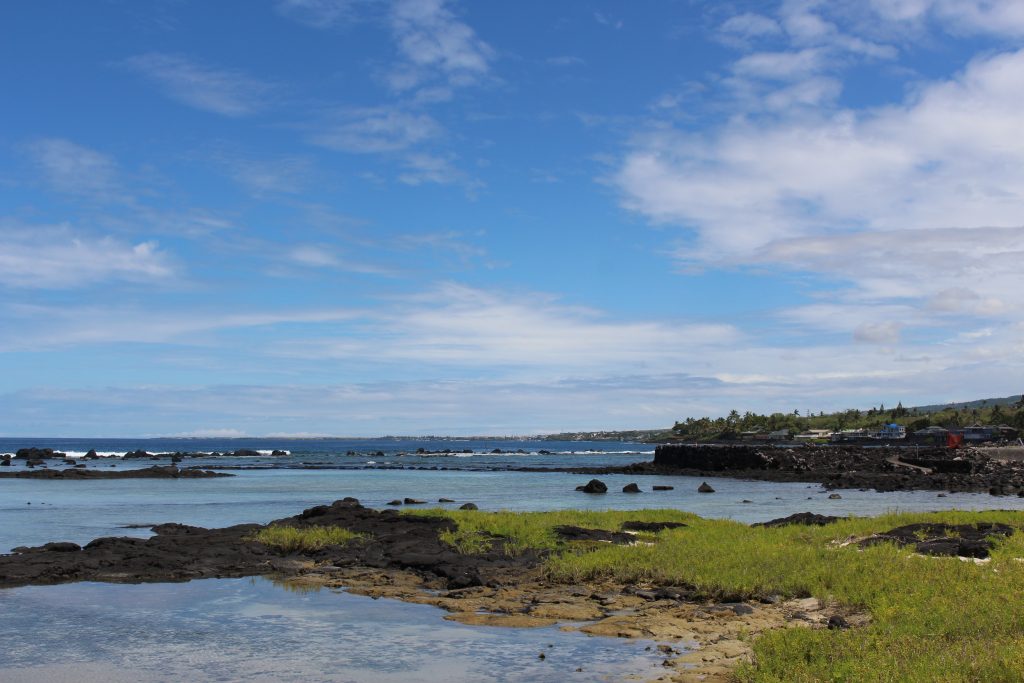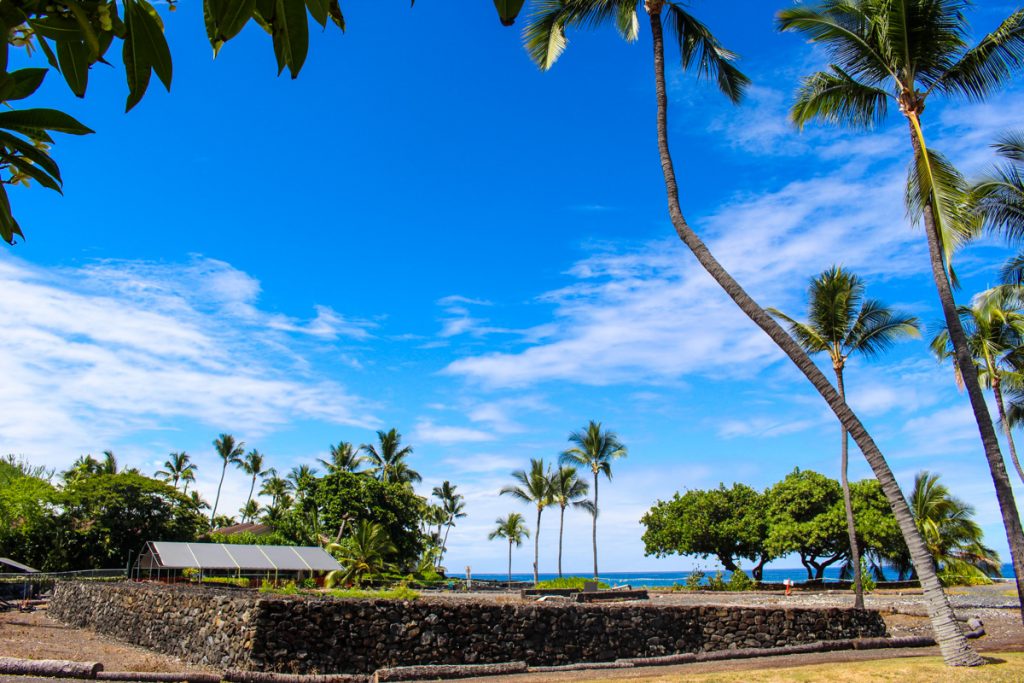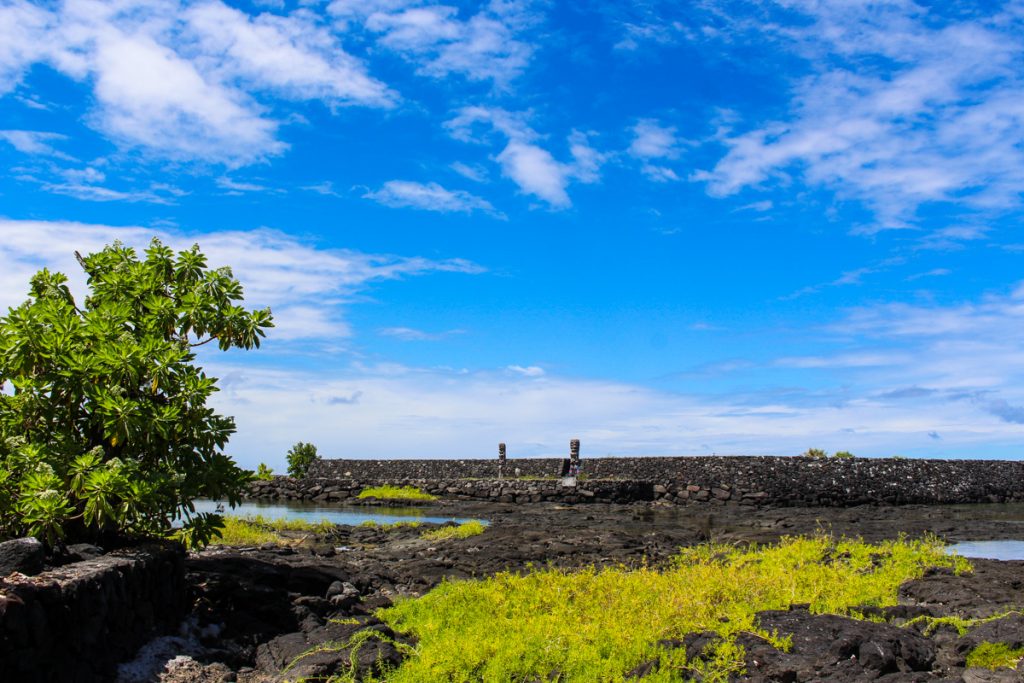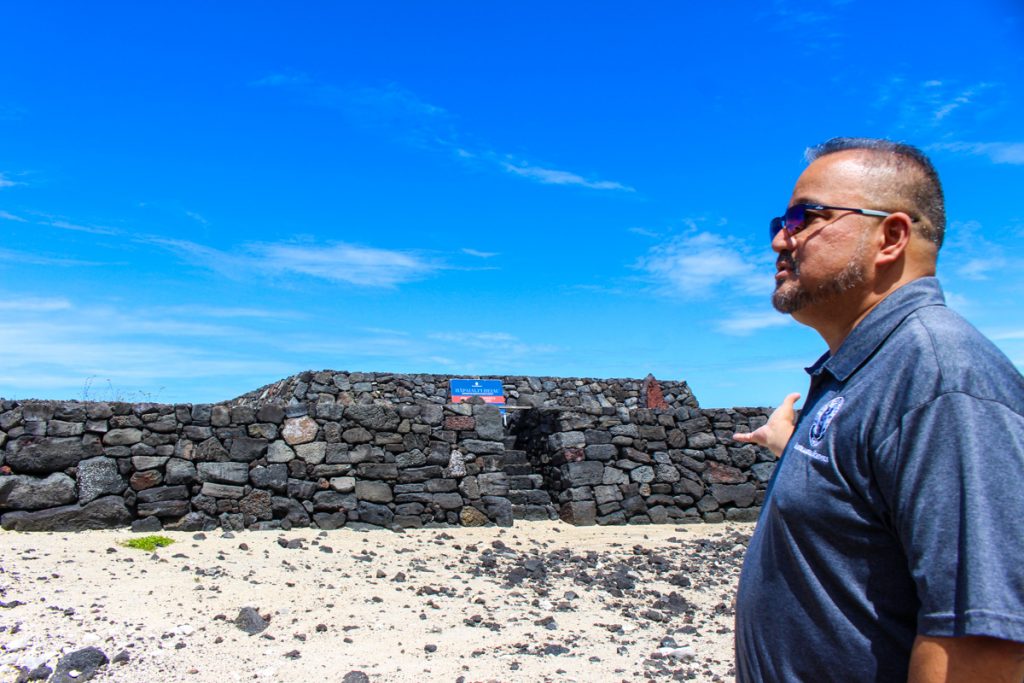Once home to Keauhou Beach Hotel and Kona Lagoon, Kamehameha Schools continues work to rehabilitate historic land
At the southern end of Ali’i Drive on the way to Keauhou Bay is a grassy 22 acres that may look like a park, but holds generations of history of the Hawaiian culture including some of the 53 heiau (temples) along its Kona coastline.
Owned by Kamehameha Schools, Kahalu‘u Ma Kai was once leased by two hotels — Kona Lagoon and Keauhou Beach Hotel. After the buildings were closed and torn down in the 2000s, the space was repurposed as the school’s trustees decided it was time to mālama (care for) the space and align it with the school’s mission of education.
Kamehameha Schools celebrated the deconstruction of the hotels in March after giving the space time to rest after COVID-19. This cultural landscape has been welcoming students for educational exploration in the years leading up to, during and after the demolition of the Keauhou Beach Resort. Kahalu‘u Ma Kai, meaning diving place ocean-side, is now where keiki go on field trips to learn about celestial navigation, the history of Kona and the rest of Hawai‘i.
Additionally, the school has been dedicated to restoring the heiau located on the property. Despite its short stretch, Kamehameha Schools Community Strategist Kaimana Barcarse said the coastline along the property has some of the most culturally significant lands in all of Hawai’i.
A pond, called Po‘o Hawai‘i in the corner of the property, is where Hawaiian chiefs such as King Kamehameha would bathe. At the other end of the beach is where renown Hawai‘i island Chief ‘Umi-a-Liloa, resided.
Restored sacred heiau include the Mākole‘ā Heiau, a woman’s heiau, as well as the Ke‘ekū Heiau, a most sacred heiau, and the Hāpaiali’i Heiau, used for timekeeping as its rocks align with the setting sun during certain times of the year.
The evolution of the land began in 2004 when the Kona Lagoon was demolished, followed by the demolition of Keauhou Beach Hotel beginning in 2017 and ending in 2019. Some remnants of the old Keauhou Beach Hotel are still visible as there’s a dip in the landscape where the old parking garage used to be.
Barcarse, who has been part of the team that oversaw the evolution of the educational complex as well as working with lineal descendants regarding the space, said he remembers when the property was known for the hotels, a beloved go-to for locals such as himself.
Barcarse’s family member ran a beauty shop at one of the old hotels. Other locals remember when it was an affordable place for residents to stay and a popular spot for live music.
“There are a lot of good memories made at the hotels,” Barcarse said. “And those memories still exist.”
However, in 2005, after lineal descendants met with the school’s trustees, it was time to restore the heiau. Around that time, the trustees performed a ceremony at the property where they planted coconut trees. Barcarse said they really connected and understood the significance of the land and saw a different vision for it, beyond commercial.
Crystal Kua, senior consultant on communication strategy at Kamehameha Schools, said that’s when the transformation began.
“It was the school’s vision of what this landscape could be,” Kua said.
Barcarse said the deconstruction, which he describes more as rehabilitation, was a sensitive process. Both the construction workers and site managers performed protocol, which included prayers of protection and permission, and throughout the process, they were mindful to not disturb the natural habitat.
The demolition of the hotels was an extensive process, which included environmental assessments, permits, plans for shoreline access, and an archeological monitoring plan and burial treatment.
Barcarse said the school is doing its best to not only restore but protect the landscape, which has shown signs of more life with fresh water springs running again, and more native birds and plant life popping up throughout.
And while occasionally they have to deal with some trespassers who are unaware of the significance of the space, Barcarse said it’s been a success story of cultural and natural restoration and conservation.
“What’s good for Hawaiians, is good for Hawai’i,” he said.
Barcarse also said since celebrating the end of construction in March, after letting the land rest for a year, and they are excited to continue the mission of connecting local haumāna (students) to their ancestral home.
“We are excited that the restoration of the cultural landscape of Kahaluʻu Ma Kai will provide opportunities for applied learning, teaching, and knowledge creation that are rooted in tradition while advancing learners and the Lāhui toward innovation, ‘ōiwi leadership and a sustainable future,” he said. “We envision seeing an increased use of ‘āina (land) and facilities by a range of learners of all ages and from all systems, a place for Hawaiian identity, confidence, and leadership and a strengthened foundation, spiritual attributes and connectedness to place.”
For more information about Kahalu’u Ma Kai, take part in a virtual huaka‘i or field trip of the site.
*Editor’s note: Information has been added to this story to ensure accuracy
Sponsored Content
Comments





















